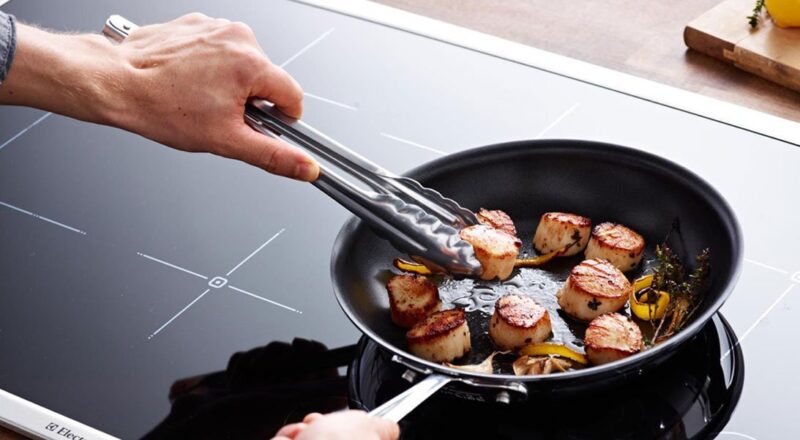Cooking with enameled cast iron on induction stovetops is a popular choice for kitchen professionals and home cooks alike. The combination of enameled cast iron and induction cooking offers a unique advantage in terms of heat distribution and retention, making it an ideal option for a variety of cooking methods.
In this article, we will explore the benefits of using enameled cast iron on induction cooktops, how to use it effectively, and tips on maintaining your cookware for long-lasting performance.

What is Enameled Cast Iron?
Enameled cast iron is a type of cookware that features a cast iron core coated with a layer of enamel. This enamel coating provides several benefits, including preventing rust and making the cookware easier to clean. Moreover, it creates a non-reactive cooking surface, which is excellent for acidic foods.
Why Use Enameled Cast Iron on Induction?
Efficient Heat Distribution
One of the primary reasons for using enameled cast iron on induction is its efficient heat distribution. Induction cooktops work by creating an electromagnetic field that directly heats the cookware. Enameled cast iron is known for its excellent heat retention and distribution properties, making it an ideal match for induction cooking.
Versatility in Cooking
Enameled cast iron is versatile and can be used for various cooking methods, including searing, braising, and simmering. It is particularly well-suited for slow-cooked dishes, as the even heat distribution ensures that food is cooked thoroughly and evenly.
Durability and Longevity
With proper care, enameled cast iron can last for generations. Its durable construction and resistance to rust make it a worthwhile investment for any kitchen. By using it on an induction cooktop, you can further extend its lifespan, as induction cooking tends to be gentler on cookware compared to traditional gas or electric stovetops.
How to Use Enameled Cast Iron on Induction
Preheating the Cookware
When using enameled cast iron on induction, it’s essential to preheat the cookware gradually. Start with a low heat setting and increase it slowly. This method helps prevent thermal shock, which could damage the enamel coating.
Choosing the Right Size
Ensure that the diameter of your enameled cast iron cookware matches the size of the induction burner. Proper alignment is crucial for efficient heating and energy conservation.
Cooking Techniques
Due to its excellent heat retention, enameled cast iron is perfect for techniques such as searing and browning. For more tips on searing meat with enameled cast iron on induction, check out our searing guide.
Maintaining Your Enameled Cast Iron
Cleaning Tips
After cooking, allow the cookware to cool before cleaning. Use warm, soapy water and a soft sponge to clean the surface. Avoid using abrasive cleaners or scouring pads that could scratch the enamel.
Avoiding Scratches
To prevent scratches, consider using silicone or wooden utensils when cooking with enameled cast iron on induction. For more advice, visit our scratch prevention guide.
Storage Solutions
When storing your enameled cast iron, ensure it is completely dry to prevent moisture buildup. Place a paper towel between stacked cookware to avoid chipping. Learn more about optimal storage in our storage tips.

FAQs
Can I use metal utensils with enameled cast iron?
It’s best to avoid metal utensils as they may scratch the enamel surface. Opt for silicone or wooden utensils instead.
Is enameled cast iron compatible with all induction cooktops?
Yes, most enameled cast iron cookware is compatible with induction cooktops. However, always check the manufacturer’s instructions to confirm compatibility.
How do I prevent food from sticking to enameled cast iron?
Ensure that the cookware is properly preheated and use a sufficient amount of oil or fat. This helps create a non-stick surface and prevents food from sticking.
For more information on using cast iron on various heat sources, visit Lodge Cast Iron’s guide.
This article contains affiliate links. We may earn a commission at no extra cost to you.

